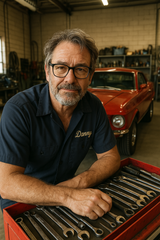Why Every Cheap Jeep Becomes a $10K Mistake (Unless You Buy These Models)
Author Bio: Danny is a co-owner of Driveway Dreams, an ASE Certified Master Technician with over 26 years of experience, and previous freelance writer for Car Engineer. For more than 17 years, he's owned and operated his own independent repair shop in Livonia, Michigan. Subscribe and follow, Danny!
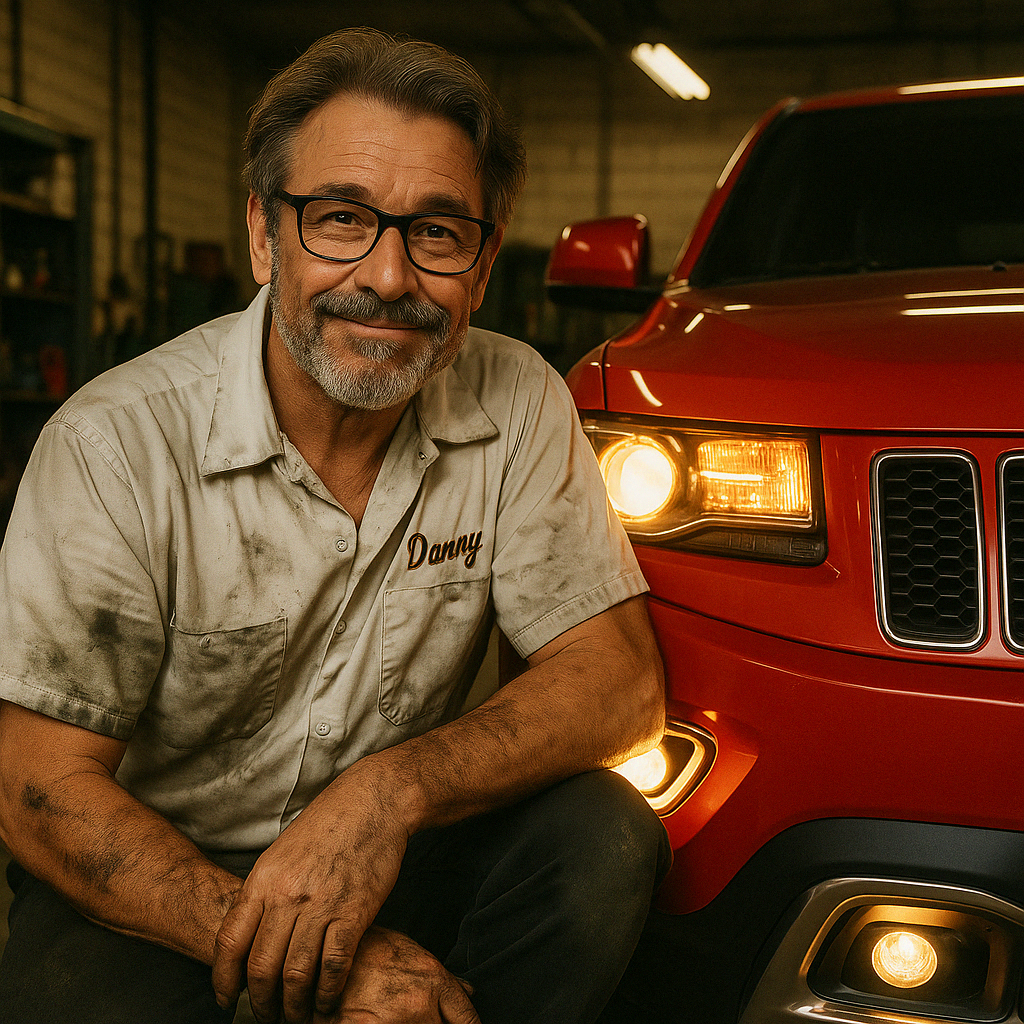
This is gonna rattle some cages.
You see a cheap Jeep on Craigslist, your buddy swears it's a steal.
Next thing you know—bam—you’re $10,000 deep in repairs with a driveway ornament that won't pass smog.
Unless you know what to buy.
Because here’s the ugly truth: the Jeep badge doesn’t guarantee durability.
It guarantees something will break—and your wallet better be ready.
So if you’re trying to buy a Jeep in 2025 and not make a $10,000 mistake, read every word of this.
Or don’t—and end up chasing parts on Facebook Marketplace with tears in your eyes.
Let’s roll.
Danny's Insider Jeep Buyer's Guide
After 26 years working on America's off-road icon, I've compiled a comprehensive guide on how to avoid the money-pit Jeeps and find the gems. Get my generation-by-generation breakdown of what to look for (and what to run from).
Join 12,000+ enthusiasts getting my insider tips
Vintage Jeeps (Pre-1987): Built to Outlive You... Until Rust Wins
Yeah, the old-school Willys and CJ Jeeps are pure Americana.
Tough. Simple. Iconic. But unless you’re buying it as a toy, don’t.
These rigs weren’t designed for modern roads or modern drivers.
They were built for war zones, not Whole Foods parking lots. The ride is harsh. The steering is vague.
And the drum brakes? Let’s just say you better hope nothing runs out in front of you.
Evidence:
- Mechanical simplicity = constant tinkering. If you’re not adjusting a carb or chasing a leak, are you even a CJ owner?
- Frames rust. Hard. Especially around spring mounts and rear shackles.
- Zero safety: lap belts, drum brakes, no crumple zones, no ABS, no airbags. Just courage.
- Parts are available—but only if you’re cool with spending hours on forums or hunting eBay.
- Prices range $5k (projects) to $40k (restored). Daily driver? Don’t bother. Weekend cruiser? Maybe.
Shop Story: Had a guy tow in a CJ-7 he just bought from a “Jeep guy.”
Looked amazing. Fresh paint. Shiny chrome.
He said, “Just want a safety check.” Famous last words.
Frame rot near the rear shackle had turned the whole thing into a death trap. Quoted him $6,500 for repair. He nearly cried. Ended up selling it for parts.
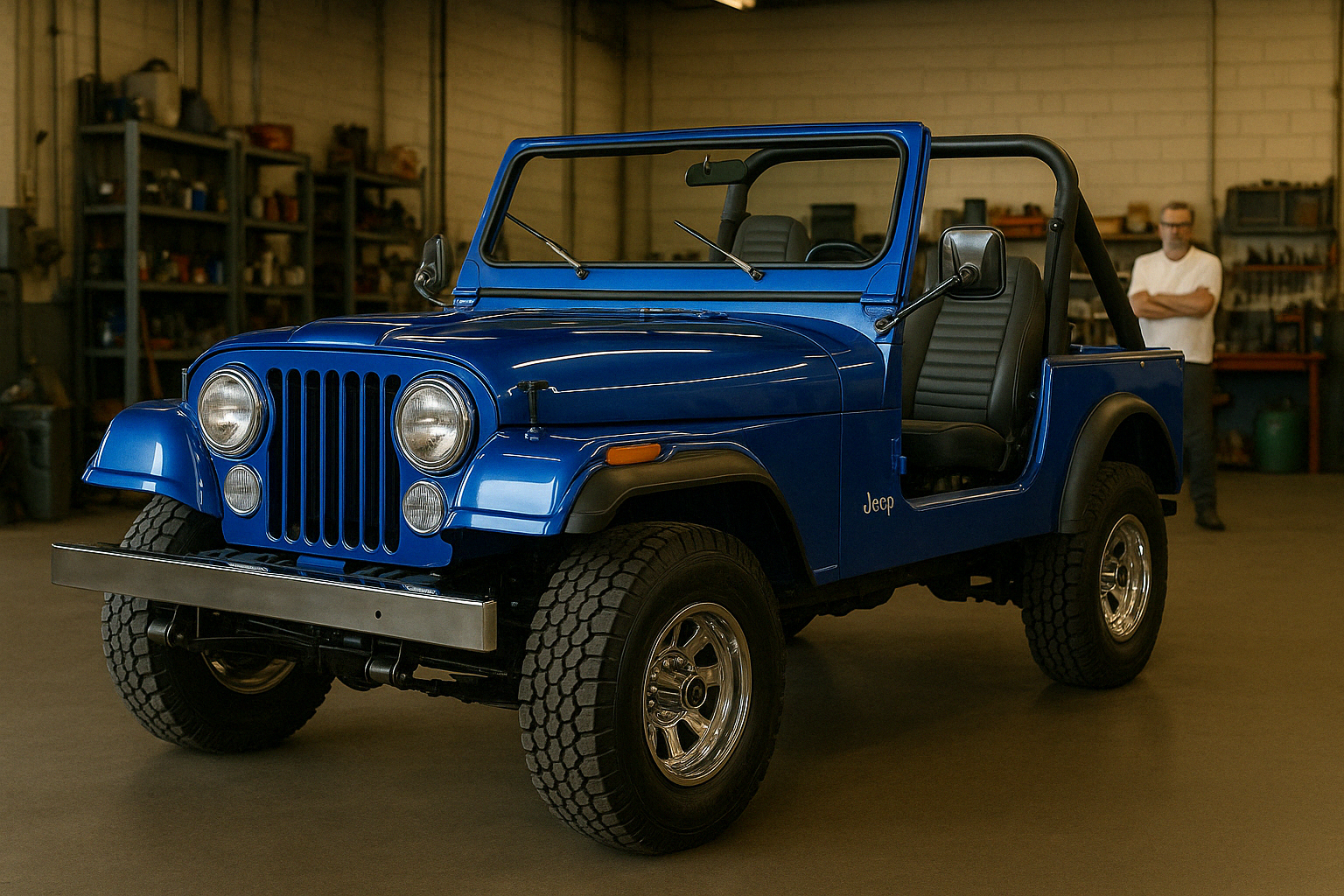
Verdict: Buy one to admire in your garage. Not to commute in.
Unless you’ve got an extra garage, extra time, and a soft spot for slow, noisy antiques, this isn’t the Jeep you want.
Still tempted by nostalgia? You might want to rethink that before the next Jeep wipes out your dental fillings. Let’s talk Wranglers.
Wrangler (YJ, TJ, JK, JL – 1987–Present): Iconic. Irritating. Irresistible.
The Wrangler is Jeep in its purest form: removable doors, go-anywhere grit, and an off-road reputation that outlives marriages.
But owning one? That’s a lifestyle—and a part-time job.
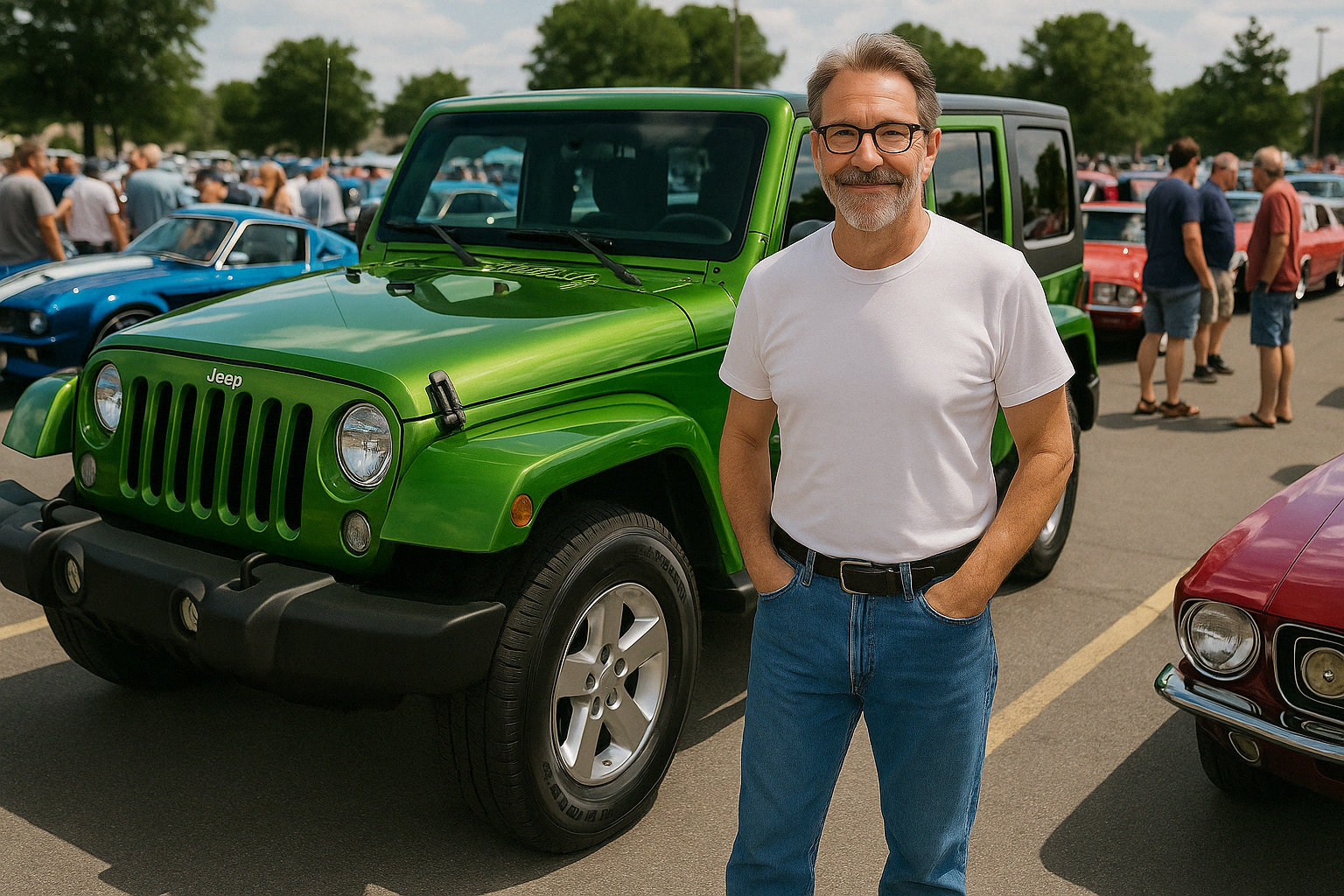
Evidence:
- YJ (1987–1995): Square headlights. AMC leftovers. 2.5L four-bangers were gutless. Rust loves these frames like a moth to flame.
- TJ (1997–2006): Solid pick. The 4.0L straight-six is near bulletproof. Easy to mod. But frame rust near control arms? Common and costly.
- JK (2007–2018): Early 3.8L V6s burn oil and sound like blenders full of gravel. Post-2012 3.6L Pentastar is better—but still needs regular TLC.
- JL (2018+): Best ride. Best tech. But also the most complaints about electronics and infotainment. Still has the Wrangler DNA… just with Apple CarPlay.
Shop Story: Customer brought in a 2008 JK with mystery shakes. Death wobble.
We replaced tie rods, ball joints, track bar—$1,200 later, still not fixed.
Turned out it was the tires. Welcome to Wrangler life.
Verdict: Want a trail beast you can wrench on and flip for nearly what you paid?
Get a TJ or a post-2012 JK.
Want to drop $50k and pray your software updates itself before your next trip? JL’s all yours.
Just understand—Wrangler ownership isn’t passive. It’s a lifestyle that includes knuckle grease and group texts with your mechanic.
Want something a little more family-friendly, with cupholders and leather? Let’s talk Grand Cherokee—and why it’s the SUV equivalent of dating someone who cancels plans… and then crashes your credit.
Know When to Buy Your Next Jeep TJ, XJ, or WK2
I track Jeep listings across the country and flag the exact moments when Wrangler TJs, Cherokee XJs, and Grand Cherokee WK2s hit value sweet spots. Join my free list and I’ll send you the insider data—with real repair stories, weekly price shifts, and buy/hold alerts.
- Weekly Price Trends
- Buy/Hold Recommendations
- VIN Years to Avoid
- Real Shop Stories
Grand Cherokee (ZJ, WJ, WK, WK2, WL): The High-Maintenance Date That Tows
Looks refined. Feels comfortable. Gets dirty like a Wrangler.
But treat this like the hot-but-crazy SUV it is: great when it's working, hell when it’s not.
Evidence:
- ZJ (1993–1998): First gen. Cheap now. But you’ll chase electrical gremlins and axle leaks until your socket set begs for mercy.
- WJ (1999–2004): The 4.0L I6 is still decent. The 4.7L V8? Known for overheating, head gasket issues, and timing chain failures.
- WK (2005–2010): Hemi power, Mercedes diesel option—but quirky wiring and flaky electronics. Avoid early 2005 builds.
- WK2 (2011–2021): Modern luxury. Air suspension? When it works. TIPM modules? When they don’t glitch. Infotainment? When it doesn’t freeze.
- WL (2021+): All-new. All-expensive. And still too young to trust. Early hybrid 4xe models already racking up tow bills.
Shop Story: Customer bought a 2015 Overland with all the options.
Thought he was getting Range Rover performance for half the price.
Six months in: air suspension failure, infotainment crash, and a mysterious rattle traced to the transfer case.
Traded it for a 4Runner. Never looked back.
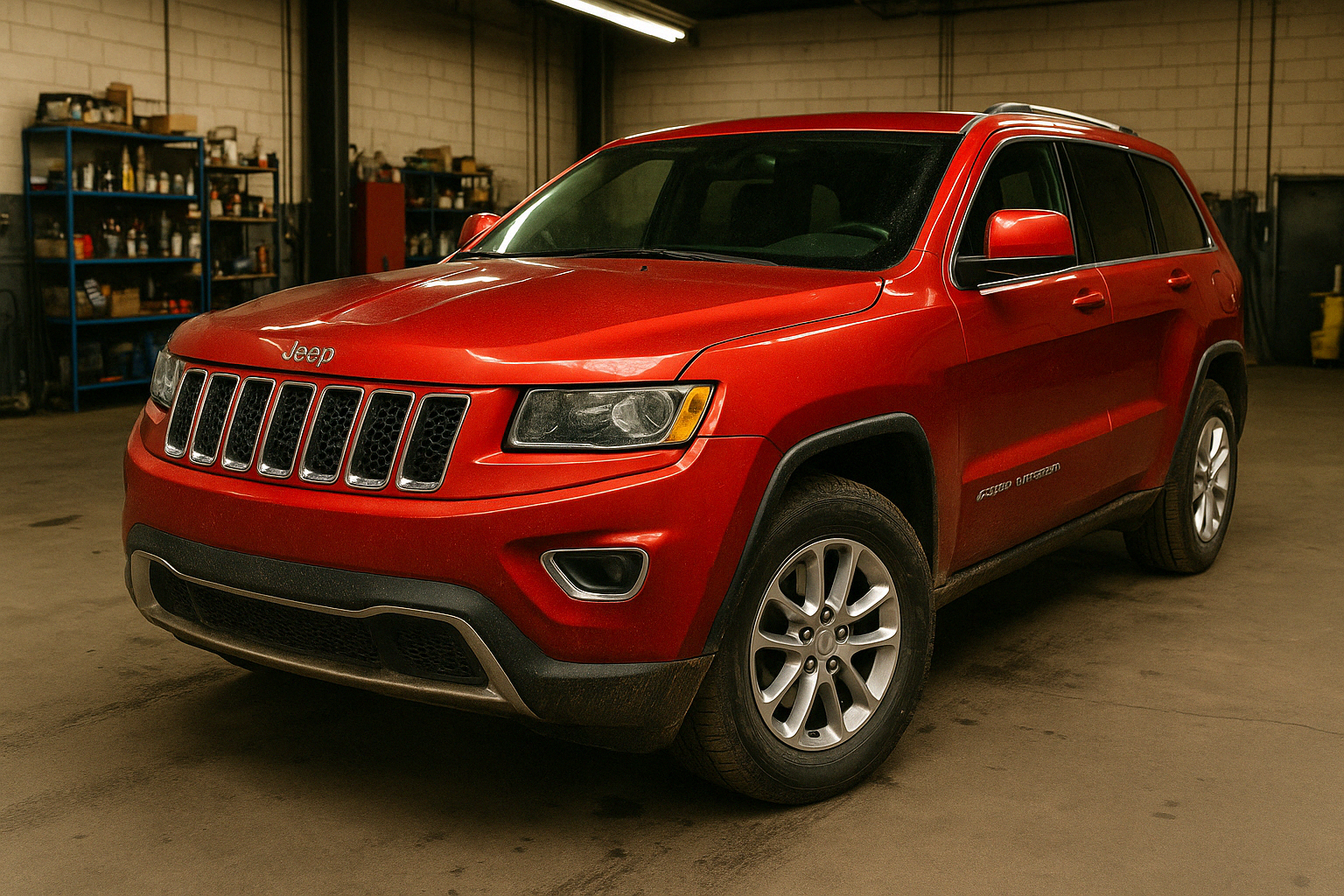
Verdict: If you absolutely want a Grand Cherokee, aim for a 2016–2019 WK2 with the 3.6L V6 and no air suspension.
Avoid the 4xe unless you like gambling with high-voltage headaches.
Looking for something simpler, cheaper, and surprisingly tough? Now we’re getting into legend territory. Let me introduce the Jeep that refuses to die.
Cherokee XJ (1984–2001): The Cockroach That Conquered Trails
Built like a brick. Drives like one too.
But if you want a reliable 4x4 for dirt cheap, this is it.
Evidence:
- Legendary 4.0L I6. Runs forever. I’ve seen them hit 350k.
- Simple suspension. Easy to lift. Dirt-cheap mods. Minimal electronics.
- Weak spots: rust in floor pans and rocker panels, cooling system, rear main seal leaks.
- Late XJs (2000–01) had a bad head casting (0331). Watch for overheating and warped heads.
Shop Story: Customer brought in a 1999 XJ with 280k miles.
Said it overheated once in 2012 and never again.
Needed a coolant hose and a belt.
Still daily driving it. Still proud. Said, “If it dies, I’ll bury it with me.”
Verdict: Find a rust-free XJ, and you’ve got a legend on your hands.
For $3k–$6k, you can get a trail-ready tank that’ll outlast newer SUVs three times its price.
But not every Jeep from this era earns its scars. Time to meet the Liberty—a Jeep so cursed it should come with a warning label.
Jeep Liberty (KJ/KK): The Middle Child That Drops Valves and Windows
Every Jeep owner knows one thing: never trust a Liberty.
Evidence:
- The 3.7L V6 engine is notorious for dropping valve seats when it overheats. And it overheats often.
- Window regulators fail so frequently, some owners carry spares in the glovebox.
- Front upper ball joints? Factory recalls. Transmission? Sloppy shifts. Electronics? Spotty.
- The CRD (diesel) version has fans, but also EGR issues, failing swirl motors, and near-impossible emissions repairs.
- Poor aftermarket support compared to Wranglers and XJs.
Shop Story: We had a Liberty towed in with no compression in one cylinder.
Owner had skipped coolant changes, thinking it wasn’t a big deal.
Dropped valve seat destroyed the piston. Engine was toast at 112,000 miles.
We quoted a used engine swap. He walked away and left it parked in the lot for three weeks.
Verdict: If it’s under $3,500 and doesn’t burn oil, you might get a year out of it.
But don’t plan on long-term reliability. This is a budget 4x4 with a built-in expiration date.
Think it can’t get worse than a Liberty? Oh, buckle up. Let me show you the fake Jeeps that never deserved the badge.
Compass & Patriot (2007–2017): Not Real Jeeps, Just Regret
Built during Chrysler’s darkest hour. These are the Jeeps that gave real Jeep guys nightmares.
Evidence:
- Both are built on a Dodge Caliber platform—not a real frame, not real off-roaders.
- CVT transmissions fail early and often. Rebuilds cost more than the car is worth.
- The 2.4L engine drinks oil and chokes out head gaskets.
- Suspension bushings and mounts wear prematurely, giving you clunks, rattles, and alignment issues.
- Early models (2007–2010) had chronic roof leaks, trim peeling, and gauge cluster failures.
Shop Story: Lady towed in a 2012 Compass after it started shaking violently at 60 mph.
We scanned it—transmission slipping, oil below minimum, suspension bushings gone.
She said, “I didn’t know you had to check oil if it wasn’t leaking.” We smiled, but it was already too late.
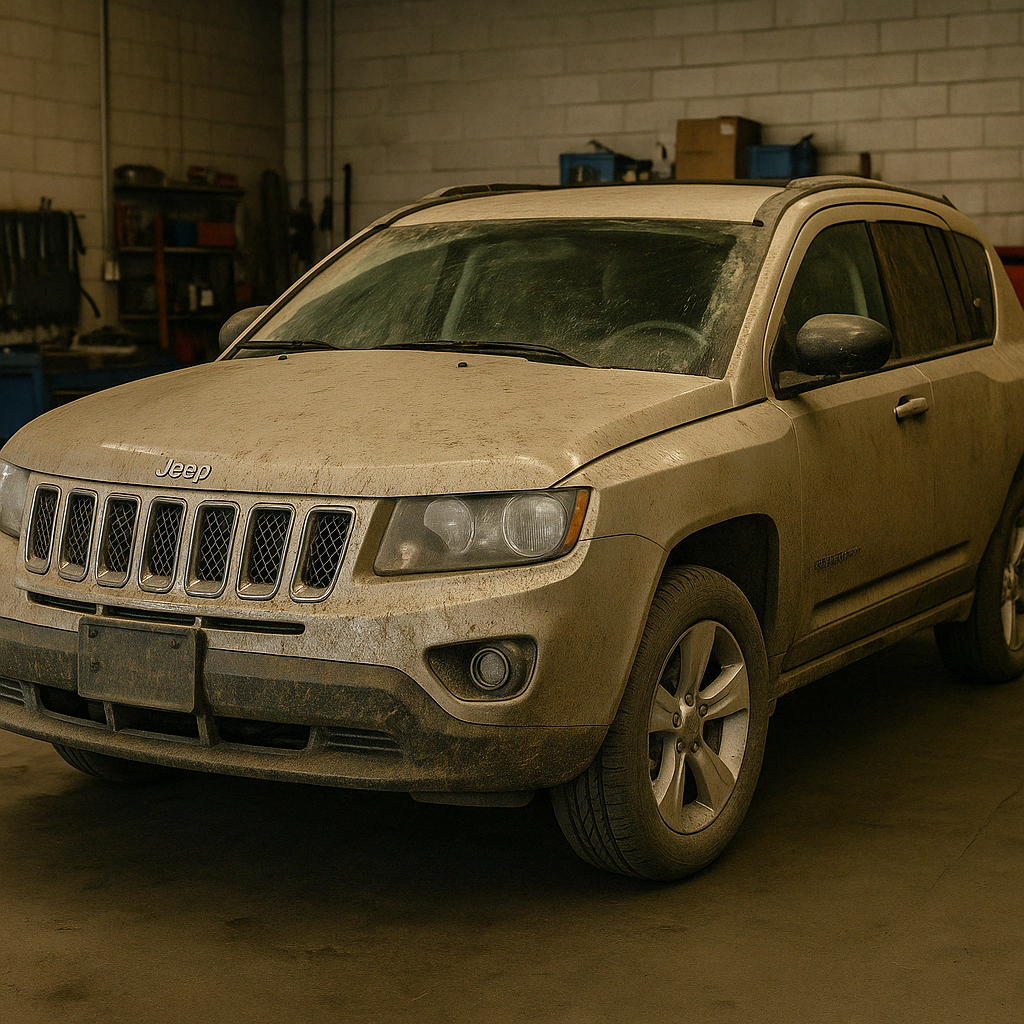
Verdict: Do not buy one unless it’s running and under $2,000.
These were built to hit price points, not trails. The only trail-rated badge these should wear is on a hiking boot.
Alright, ready for some hope? Let’s talk about the few used Jeeps that actually make sense—and don’t come with a monthly mechanic subscription.
The Holy Trinity of Smart Jeep Buys in 2025
After all the breakdowns, electrical ghosts, and ball joint horror stories, three Jeeps stand tall.
Not perfect—but reliable, proven, and actually worth your money.
1. Wrangler TJ (1997–2006)
- 4.0L I6 engine is the gold standard. Overbuilt, under-stressed, and easy to wrench on.
- Coil spring suspension gives better ride than YJ’s leafs.
- Simple electronics. Solid axles. Real frame.
- Tons of aftermarket support—can turn into a rock crawler, mall crawler, or anything in between.
Shop Story: Guy brought in a 2004 TJ with 210,000 miles. Daily driven.
Said he’s only replaced the alternator, water pump, and radiator in 10 years.
No check engine light. Said, “It’s the most reliable thing I’ve ever owned.”
2. Cherokee XJ (1997–2001 preferred)
- Legendary for a reason. The 4.0L in a unibody tank.
- Easy to repair. Built before tech took over.
- Rear leafs + front coils = decent articulation and off-road credibility.
- Watch for rust and overheating, but otherwise these are cockroaches in 4x4 form.
Shop Story: One customer swore by his 2000 XJ.
Had over 330,000 miles on it.
He said he rolled it once, replaced the door, and kept driving. We believed him.
That Jeep looked beat—but it still ran like it had a mission.
3. Grand Cherokee WK2 (2016–2019)
- Comfortable. Refined. Capable.
- Best years balance modern amenities with fewer bugs.
- Stick with the 3.6L V6. Skip the air suspension.
- Can tow, can daily, and won’t ruin your weekends with flashing warning lights—most of the time.
Shop Story: Regular customer bought a 2017 Limited. Said it was his wife’s “city Wrangler.”
No air suspension. Just basic maintenance and fluid flushes.
Has over 120k on it, still going strong. Best part? It doesn’t rattle like her old JK.
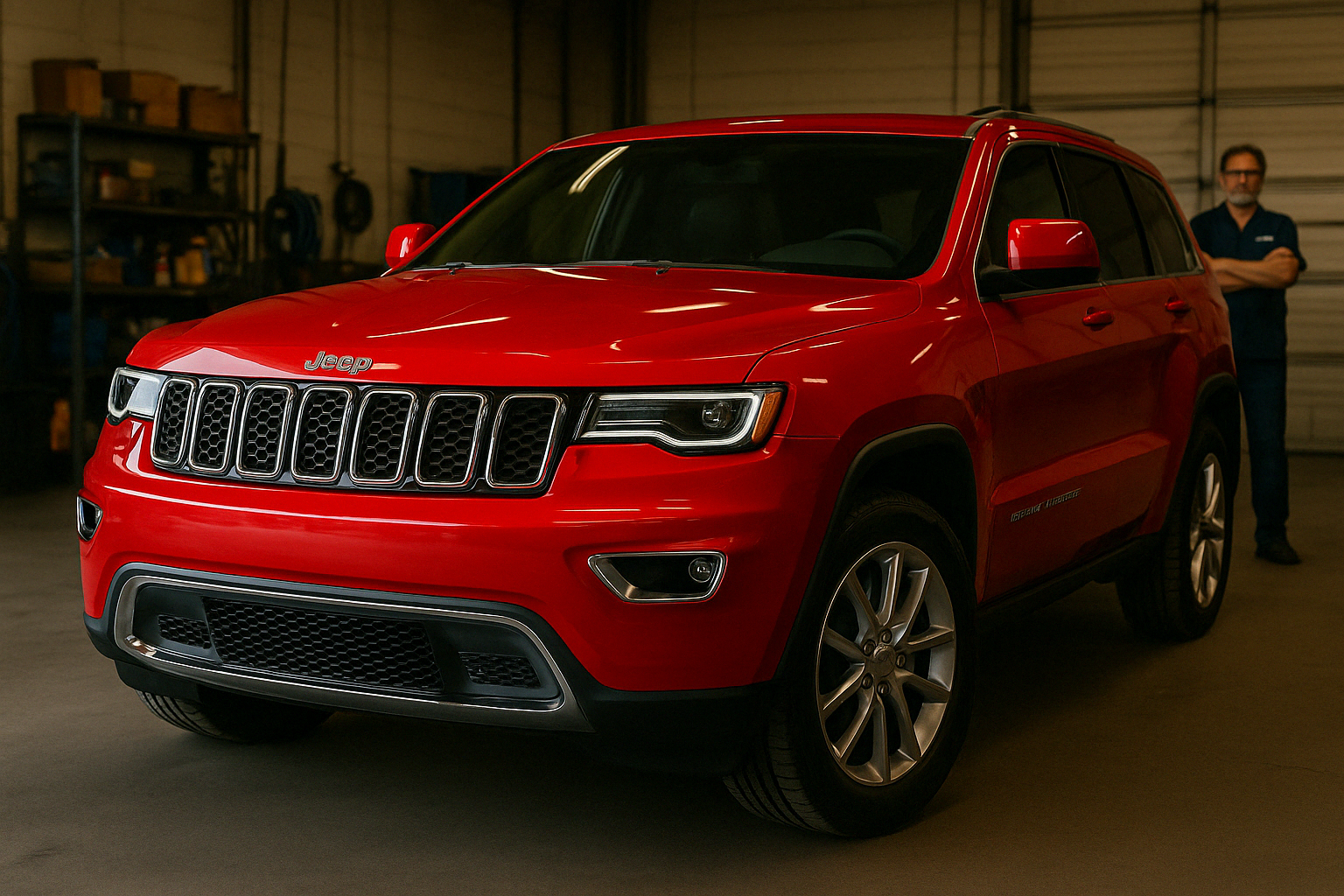
Verdict: If you’re shopping for a used Jeep in 2025, the smart move is clear.
Find a rust-free TJ or XJ, or a clean WK2 with maintenance history.
Anything else? You’re playing with fire—and your bank account.
Final Verdict: The Best Cheap Jeep to Buy in 2025
Still on the fence? Let me make it crystal clear.
Winner: 1997–2006 Wrangler TJ
Why?
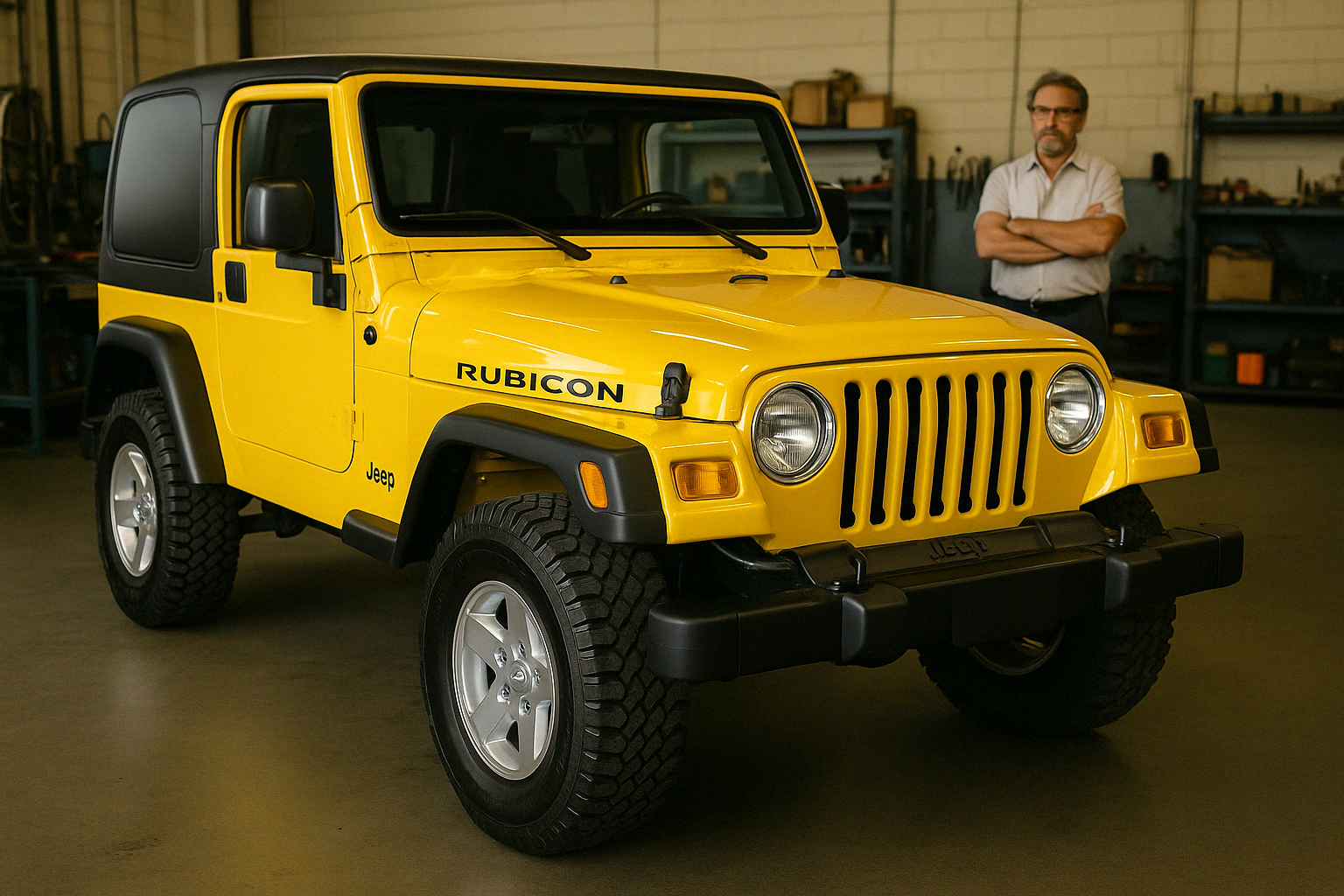
- Legendary engine.
- Simple design.
- Easy to fix. Easy to sell.
- Drives like a Jeep should—raw, fun, and functional.
You’ll get a Jeep that feels like a Jeep. You can take the top off, wrench on it in your garage, and actually enjoy owning it.
Expect to pay $8,000–$15,000 for a clean one.
And if you’re smart with your upgrades, you’ll get most of that back when it’s time to sell.
Runner-up: 1999–2001 Cherokee XJ
Just as rugged, with room for the kids and gear.
Look out for overheating and rust, and you’re golden.
Still one of the best off-road-to-dollar ratios in history.
Best Modern Buy: 2016–2019 Grand Cherokee WK2
For folks who want refinement without Range Rover repair bills.
Comfortable, capable, and reliable—if you buy the right one.
Final Word
The best cheap Jeep isn’t the one with the lowest price tag. It’s the one that won’t leave you stranded in the snow, cursing under your breath with an empty bank account.
So skip the fake Jeeps. Skip the CVTs. Skip the rusted-out Craigslist heartbreakers.
Buy a TJ. Or an XJ. Or a WK2.
Drive it. Wrench it. Wave at other Jeeps. Smile. Because this time? You did it right.
Case closed.
Know When to Buy Your Next Jeep TJ, XJ, or WK2
I track Jeep listings across the country and flag the exact moments when Wrangler TJs, Cherokee XJs, and Grand Cherokee WK2s hit value sweet spots. Join my free list and I’ll send you the insider data—with real repair stories, weekly price shifts, and buy/hold alerts.
- Weekly Price Trends
- Buy/Hold Recommendations
- VIN Years to Avoid
- Real Shop Stories

